#claire francois icons
Text





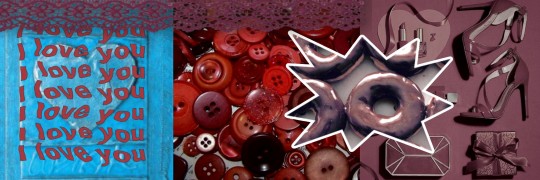
all i want, only you ! 🍒🌸
#claire francois#rae taylor#wataoshi#watashi no oshi wa akuyaku reijou#i'm in love with the villainess#i favor the villainess#claire francois layouts#rae taylor layouts#wataoshi layouts#i'm in love with the villainess layouts#watashi no oshi wa akuyaku reijou layouts#claire francois icons#rae taylor icons#wataoshi icons#i'm in love with the villainess icons#watashi no oshi wa akuyaku reijou icons#anime layouts#anime icons#messy layouts#manga#manga icons#matching icons#couple icons#wataoshi packs#anime packs
224 notes
·
View notes
Text







^_^
#claire francois#im in love with the villainess#Watashi no Oshi wa Akuyaku Reijou#rae taylor#messy headers#dividers#messy packs#anime icons#anime layouts#anime headers#messy icons#anime packs#manga icons#manga layouts#rae x claire#gl icons#matching pfps#lovely Complex headers#otani x koizumi#claire icons#light novel#soft icons#random layouts#edgy moodboard#coquette#twitter packs#yuri manga#girls love#i favor the villainess#me apaixonei pela vilã
137 notes
·
View notes
Text









› me apaixonei pela vilã! Matching icons 𖦹’
› deixe o like ou reblog se pegar <3
› créditos não são obrigatórios, mas apreciados.
#icon 120x120#120x120 icons#icons#spirit icons#icon#pfp icons#pfp#me apaixonei pela vilã#matching icons#matching pfps#Yuri#GL#Spirit#spirit fanfics#spirit icon#icons 120x120#120x120 icon#i'm in love with the vilaness#rae taylor#claire francois#Claire François x rae Taylor
48 notes
·
View notes
Text



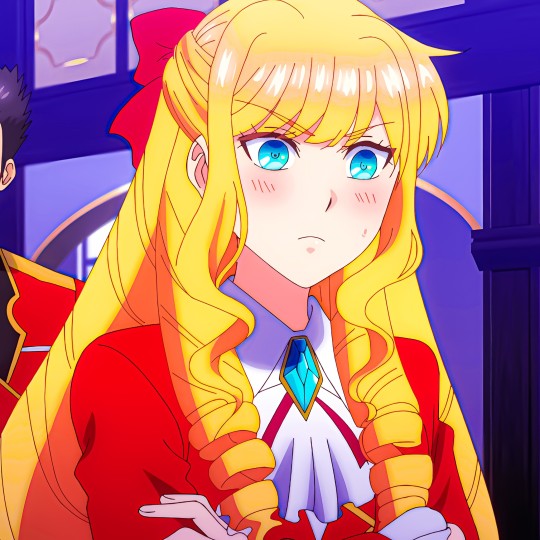



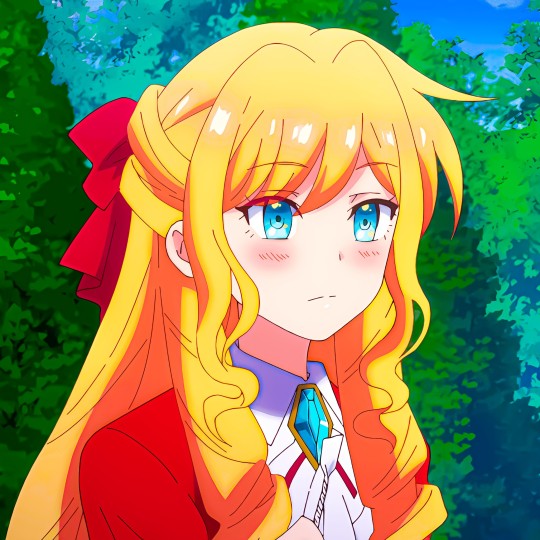


๛ 𝐂𝐋𝐀𝐈𝐑𝐄
[ Watashi no Oshi wa Akuyaku Reijou EP3 ]
#claire francois#rae taylor#watashi no oshi wa akuyaku reijou#me apaixonei pela vilã#waifu#waifu icons#twitter icons#matching icons#icons#icons anime#anime#random icons#animesbrasil#pfp#pfp icons#gl#girls love#yuri
74 notes
·
View notes
Photo









Assorted Icons (128-128)
#ichigo momomiya#tokyo mew mew#aisha#layla#winx club#gigan#akatsuki no yona#gao xiaolian#faraway wanderers#tian ye ke#kirumi tojo#danganronpa#tara bryck#heart of the woods#shantae#claire francois#i favor the villainess#shiori tokimiya#nil admirari no tenbin#icons
11 notes
·
View notes
Text
Images of 1910 in Fashion -
According to Wikipedia, "Geneviève Lantelme (born Mathilde Hortense Claire Fossey, 20 May 1883 – 24/25 July 1911) was a French stage actress, socialite, fashion icon, and courtesan. Considered by her contemporaries to be one of the most beautiful women of the Belle Epoque..."
1910 (November) Geneviève Lantelme in Paquin dress photo by Auguste Bert Le Théatre no. 286. From Wikimedia; fixed spots w Pshop 2489X3663.

Left 1910 (Juin) Lantelme by Félix. From Wikimedia 1947X2868,
Right 1910 (june) Lantelme in Jeanne Lanvin dress photo by Félix Les Modes. From verbinina.wordpress.com/page/8/; fixed spots w Pshop 1864X2522.
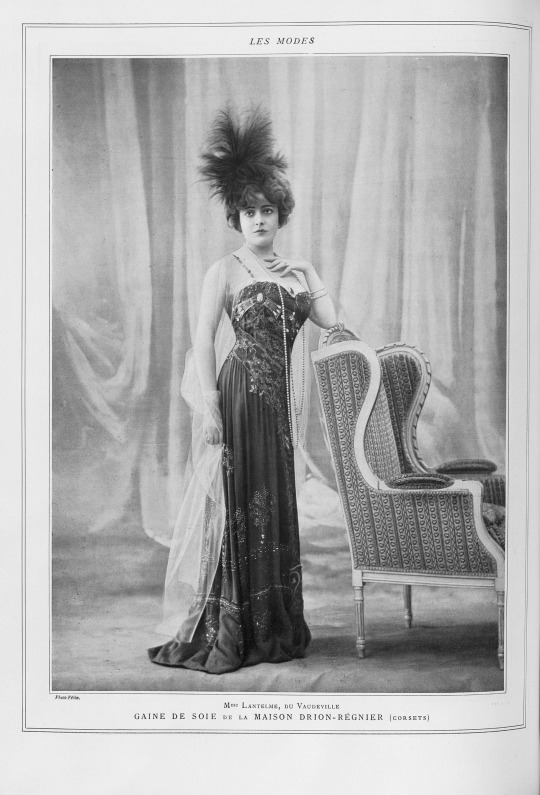

1910 (November) Femina cover Geneviève Lantelme wearing fur. From Wikimedia 1654X2068.
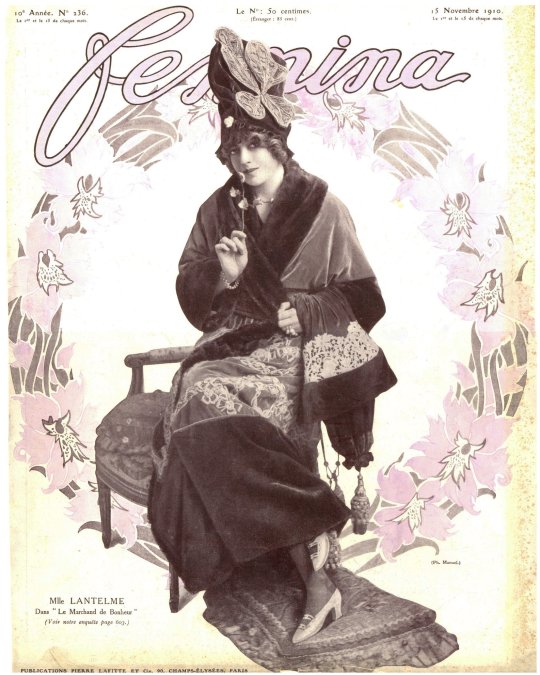
According to Wikipedia, "Joaquín Sorolla y Bastida (Valencian: Joaquim Sorolla i Bastida, 27 February 1863 – 10 August 1923)[a] was a Spanish Valencian painter. Sorolla excelled in the painting of portraits, landscapes and monumental works of social and historical themes. His most typical works are characterized by a dexterous representation of the people and landscape under the bright sunlight of Spain and sunlit water." He painted several portraits of his wife Clotilde and at least one of daughter Elena. He portrayed people on the beach in white or dressed in traditional black.
Left 1910 Clotilde con perro y gato by Joaquín Sorolla y Bastida (Museo Sorolla). From joaquin-sorolla.blogspot.com/2009/06/clotilde-sentada_04.html 1000X1600.
Right 1910 Clotilde con sombrero negro by Joaquín Sorolla y Bastida (Museo Sorolla - Madrid, Spain) photo - Ramón Muñoz. From the photostream of Ramón Muñoz on flickr; fixed spots & wrinkles w Pshop 1122X1732.

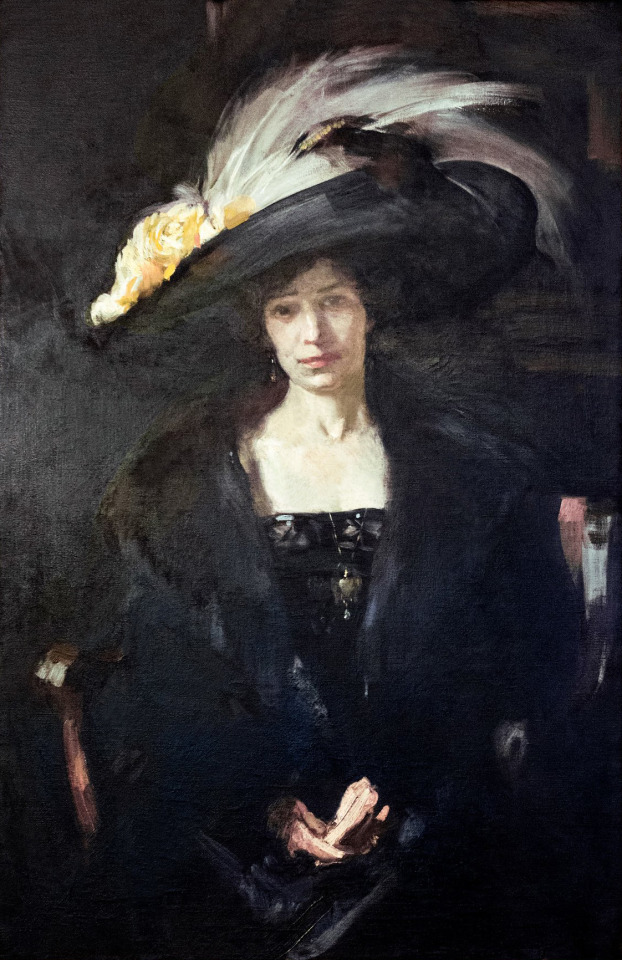
Left 1910 Clotilde con traje de noche by Joaquín Soroola y Bastida (Museo Sorolla - Madrid, Spain). From joaquin-sorolla.blogspot.com/2014/10/clotilde-con-traje-de-noche_5.html?m=1 1112X1600.
Right 1910 Clotilde sentada en un sofá by Joaquín Sorolla y Bastida (Museo Sorolla - Madrid, Spain). From Wikimedia; fixed spots w Pshop 1168X1932.


1910 Elena (Sorolla) con sombrero negro by Joaquín Sorolla y Bastida (private collection). From joaquin-sorolla.blogspot.com/2015/08/elena-con-sombrero.html?m=1 1198X1594.

Left 1910 Comtesse de la de la Maitrie in equestrian dress by Charles Albert Walhain (private collection) From liveinternet.ru/journalshowcomments.php?jpostid=319050317&journalid=4507805&go=prev&categ=0 950X1679.
Right 1910 Erzherzogin Maria Therese by H. C. Kosel. From eBay; removed mono-color tint 675X1061.


Left 1910 Lady Elsie Duveen, née Salamon by François Flameng (Ferens Art Gallery - Kingston upon Hull, East Riding of Yorkshire, UK). From artrenewal.org/artists/francois-flameng/158 2016X2610 @144 4.9Mp.
Right 1910 Madame Von Bodenhausen avec son enfant Luli by Theo van Rysselberghe (private collection). From the discontinued Athenaeum Web site 721X889.


#1910s fashion#1910 fashion#Belle Époque fashion#Edwardian fashion#Geneviève Lantelme#Jeanne Paquin#Auguste Bert#Le Théatre magazine#feather headdress#jeweled headdress#Félix#Jeanne Lanvin#veil#Femina magazine#Joaquín Sorolla y Bastida#Clotilde Sorolla#jacket#hair flowers#Elena Sorolla#Comtesse de la de la Maitrie#equestrian dress#Charles Albert Walhain#François Flameng#boots#vest#Erzherzogin Maria Therese#H. C. Kosel#Elsie Duveen#Madame Von Bodenhausen#Theo van Rysselberghe
8 notes
·
View notes
Text






Matching Rae And Claire Icons
Feel free to use
#icons#matching icons#rae#rae taylor#claire#claire francois#watashi no oshi wa akuyaku reijou#i favor the villainess#im in love with the villainess#rae icons#rae taylor icons#claire icons#claire francois icons#watashi no oshi wa akuyaku reijou icons#i favour the villainess icons#im in love with the villainess icons
241 notes
·
View notes
Text
Ranking the looks of Rocket Raccoon, Part 1: The Worst
#80
Annihilators (2011), #4 (Timothy Green II, Nathan Fairbairn)

Not to be mean to Timothy Green II, but this is the worst thing I’ve even seen. Why is his face so... like that? I don’t even know how to describe it.
#79
Guardians of the Galaxy (2013), #3 (Steve McNiven, John Dell, Justin Ponsor)

This isn’t quite as terrible but something about it terrifies me.
#78
Annihilation Conquest - Starlord (2007), #3 (Timothy Green II, Victor Olazaba, Nathan Fairbairn)
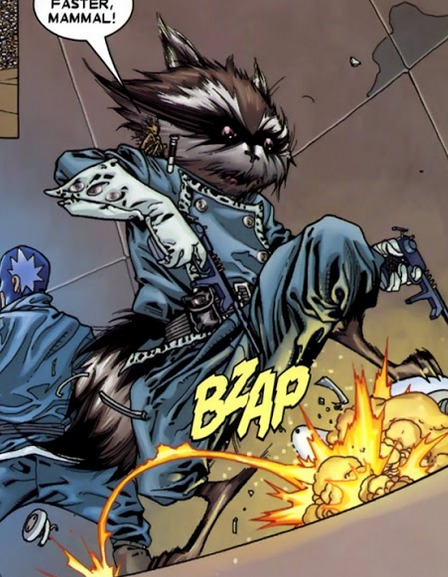
Why is his face so flat?
#77
Guardians of the Galaxy (2008), #3 (Paul Pelletier, Rick Magyar, Nathan Fairbairn)

I still haven’t read the 2008 run of GOTG, just because I can’t get over the fact that this is how they decided to draw Rocket.
#76
Avengers Assemble (2012), #7 (Mark Bagley, Danny Miki, Paul Mounts)

He looks almost as uncomfortable as this image makes me feel.
#75
War of Kings (2009), #3 (Paul Pelletier, Rick Magyar, Wil Quintana)
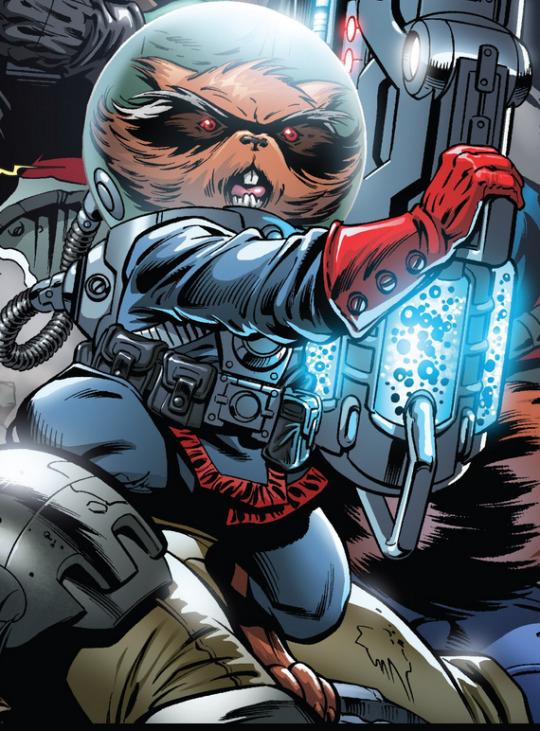
If they were trying to make him look like a gerbil then they did a good job.
#74
Guardians of the Galaxy (2008), #24 (Wes Craig, Serge LaPointe, Nathan Fairbairn)

Has a lot of the same problems as #77, but it’s a little bit better.
#73
Deadpool Vs Thanos (2015), #2 (Elmo Blondoc, Ruth Redmond)

And we're back to flat faces. He looks like a bear with dyed fur.
#72
Guardians of the Galaxy and X-Men: The Black Vortex Omega (2015), (Ed McGuinness, Javier Garrón, Mark Farmer, Marte Gracia)

He’s shaped wrong, but I can’t pinpoint exactly how.
#71
Rocket Raccoon and Groot (2016), #5 (Jay Fosgitt, Jean-Francois Beaulieu)

I don’t even know what they were going for with this but they failed.
#70
Annihilation Conquest (2008), #5 (Tom Raney, Scott Hanna, Frank D’Armata)
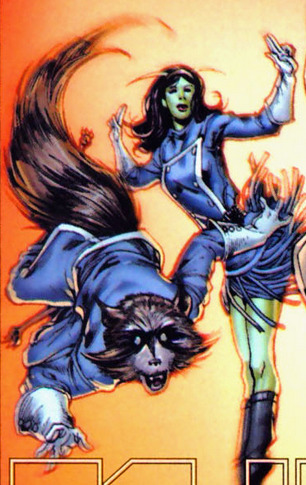
This one isn’t actually that terrible but something about his face feels off somehow. At least they finally figured out that raccoons don’t have flat faces. Also Mantis posing in the background is iconic.
#69
Infinity Wars Vol 1 (2018), #2 (Mike Deodato Jr., Frank Martin Jr.)

You might not be able to tell from this image (which is one of the only times Rocket appears), but these are actually 3D models with a comic book filter. It sounds like a cool idea, but it didn’t turn out super great.
#68
Guardians of the Galaxy (2015), #14 (Kevin Maguire, Richard Isanove)

He’s supposed to look awful here so I guess they did a good job. The amount of detail in the eyes compared to everything else is off-putting.
#67
Nova (2013), #3 (Ed McGuinness, Dexter Vines, Marte Gracia)

The art here is pretty good, but it doesn’t look like Rocket. What’s up with the white stripes?
#66
Marvel on XD: Guardians of the Galaxy (2015), #10 (Claire Tobin? Maybe?)

I’m pretty sure these comics are just screencaps of the animated show, which is why I had a hard time finding the artists. I’ve seen some clips and it looks a lot better in motion.
#65
Rocket Raccoon and Groot (2016), #3 (Filipe Andrade, Jean-Fancois Beaulieu)

This isn’t even that bad, I just don’t personally like the style. Something about his ears feels off to me.
#64
Guardians of the Galaxy: Galaxy’s Most Wanted (2014), (Andrea Di Vito, Laura Villari)

He looks like an actual raccoon here, but he doesn’t look like Rocket if you know what I mean.
#63
Guardians of the Galaxy and X-Men: The Black Vortex Alpha (2015), (Ed McGuinness, Kris Anka, Mark Farmer, Jay Leisten, Mark Morales, Marcelo Maiolo)

Again with the stripes. I do like his expression though.
#62
Groot (2016), #6 (Brian Kesinger)

He looks like some youtuber’s rantsona.
#61
The Thanos Imperative (2011), #2 (Miguel Sepulveda, Jay David Ramos)

He looks too nice here.
24 notes
·
View notes
Text
Chanel: Iconic couturier Karl Lagerfeld dies in Paris
PARIS — Karl Lagerfeld, Chanel’s iconic couturier whose designs had an unprecedented impact on the entire fashion industry, died Tuesday in Paris, prompting an outpouring of love and admiration for the man in the trademark white ponytail, high starched collar and dark enigmatic glasses who dominated high fashion for the past 50 years.
Although he spent virtually his entire career at luxury labels catering to the very wealthy — including 20 years at Chloe — Lagerfeld’s designs quickly trickled down to low-end retailers, giving him global influence.
Such was the enigma surrounding the German-born designer that even his age was a point of mystery for decades, with reports he had two birth certificates, one dated 1933 and the other 1938.
In 2013, Lagerfeld told the French magazine “Paris Match” he was born in 1935, but in 2019 his assistant still didn’t know the truth — telling The Associated Press he liked “to scramble the tracks on his year of birth — that’s part of the character.”
Chanel confirmed that Lagerfeld, who had looked increasingly frail in recent seasons, died early Tuesday in Paris. Last month, he did not come out to take a bow at the house’s couture show in Paris — a rare absence that the company attributed to him being “tired.”
“An extraordinary creative individual, Lagerfeld reinvented the brand’s codes created by Gabrielle Chanel: the Chanel jacket and suit, the little black dress, the precious tweeds, the two-tone shoes, the quilted handbags, the pearls and costume jewelry,” Chanel said.
“Thanks to his creative genius, generosity and exceptional intuition, Karl Lagerfeld was ahead of his time, which widely contributed to the House of Chanel’s success throughout the world,” the brand’s CEO Alain Wertheimer said. “Today, not only have I lost a friend, but we have all lost an extraordinary creative mind to whom I gave carte blanche in the early 1980s to reinvent the brand.”
Chanel said Virginie Viard, his longtime head of studio, will create the house’s upcoming collections. Chanel did not say whether her appointment was permanent.
Lagerfeld was one of the most hardworking figures in the fashion world, holding down the top design jobs at LVMH-owned luxury label Fendi from 1977, and Paris’ family-owned power-house Chanel in 1983. He lost around 90 pounds in his late 60s to fit into the latest slimline fashions.
At Chanel, he served up youthful designs that were always of the moment and sent out almost infinite variations on the house’s classic skirt suit, ratcheting up the hemlines or smothering it in golden chains, stings of pearls or pricey accessories. They were always delivered with wit.
“Each season, they tell me (the Chanel designs) look younger. One day we’ll all turn up like babies,” he once told The Associated Press.
His outspoken and often stinging remarks on topics as diverse as French politics and celebrity waistlines won him the nickname “Kaiser Karl” in the fashion media. Among the most acid comments included calling former French President Francois Hollande an “imbecile” who would be “disastrous” for France in Marie-Claire, and telling The Sun British tabloid that he didn’t like the face of Pippa Middleton, the Duchess of Cambridge’s sister.
“She should only show her back,” he advised.
Lagerfeld was also heavily criticized for sending out a negative message to women when he told France’s Metro newspaper that British singer Adele was “a little too fat.”
Despite this, he did have an under-reported soft side. He was known to be very kind to his staff at Chanel and was famous for giving journalists long interviews after each fashion show. He also shared his unmarried life in his Parisian mansion with a Siamese cat called Choupette.
“She is spoilt, much more than a child could be,” he told the AP in 2013, revealing that he took her to the vet nearly every 10 days.
Lagerfeld had little use for nostalgia and kept his gaze firmly on the future. Well into his 70s, he was quick to embrace new technology: He famously had a collection of hundreds of iPods.
A photographer who shot ad campaigns for Chanel and his own eponymous label, Lagerfeld also collected art books and had a massive library and a bookstore as well as his own publishing house. He was also an impressive linguist, switching between perfect French, English, Italian and his native German during interviews at fashion shows.
Although he spent much of his life in the public eye, Lagerfeld remained a largely elusive figure. Even as he courted the spotlight, he made an apparently deliberate effort to hide what was going on behind his trademark dark shades.
“I am like a caricature of myself, and I like that,” British Vogue quoted Lagerfeld as saying. “It is like a mask. And for me the Carnival of Venice lasts all year long.”
After cutting his teeth at Paris-based label Chloe, Lagerfeld consolidated his reputation in the 1980s when he revived the flagging fortunes of the storied Paris haute couture label Chanel. There, he helped launch the careers of supermodels including Claudia Schiffer, Ines de la Fressange and Stella Tennant.
In a move that helped make him a household name, Lagerfeld designed a capsule collection for Swedish fast-fashion company H&M in 2004 and released a CD of his favourite music shortly after.
A weight-loss book he published in 2005 — “The Karl Lagerfeld Diet” — consolidated his status as a pop culture icon. In the book, Lagerfeld said it was his desire to fit into the slim-cut suits by then-Dior Homme designer Hedi Slimane that had motivated his dramatic transformation.
The son of an industrialist who made a fortune in condensed milk and his violinist wife, Lagerfeld was born into an affluent family in Hamburg, Germany.
Lagerfeld had artistic ambitions early on. In interviews, he variously said he wanted to become a cartoonist, a portraitist, an illustrator or a musician.
“My mother tried to instruct me on the piano. One day, she slammed the piano cover closed on my fingers and said, ‘draw, it makes less noise,” he was quoted as saying in the book “The World According to Karl.”
At 14, Lagerfeld came to Paris with his parents and went to school in the City of Light. His fashion career got off to a precocious start when, in 1954, a coat he designed won a contest by the International Wool Secretariat. His rival, Yves Saint Laurent, won that year’s contest in the dress category.
Lagerfeld apprenticed at Balmain and in 1959 was hired at another Paris-based house, Patou, where he spent four years as artistic director. After a series of jobs with labels including Rome-based Fendi, Lagerfeld took over the reins at Chloe, known for its romantic Parisian style.
Lagerfeld also started his own label, Karl Lagerfeld, which though less commercially successful than his other ventures, was widely seen as a sort of sketchpad where the designer worked through his audacious ideas.
In 1982, he took over at over Chanel, which had been dormant since the death of its founder, Coco Chanel, more than a decade earlier.
“When I took on Chanel, it was a sleeping beauty — not even a beautiful one,” he said in the 2007 documentary “Lagerfeld Confidential.” “She snored.”
For his debut collection for the house, Lagerfeld injected a dose of raciness, sending out a translucent navy chiffon number that prompted scandalized headlines.
He never ceased to shake up the storied house, sending out a logo-emblazoned bikini so small the top looked like pasties on a string and another collection that dispensed entirely with bottoms, with the models wearing little jackets over opaque tights instead.
Lagerfeld was open about his homosexuality — he once said he announced it to his parents at 13 — but kept his private life under wraps. Following his widely known relationship with a French aristocrat who died of AIDS in 1989, Lagerfeld insisted he prized his solitude above all.
“I hate when people say I’m ‘solitaire’ (or solitary.) Yes, I’m solitaire in the sense of a stone from Cartier, a big solitaire,” Lagerfeld told The New York Times. “I have to be alone to do what I do. I like to be alone. I’m happy to be with people, but I’m sorry to say I like to be alone, because there’s so much to do, to read, to think.”
As much as he loved the spotlight, Lagerfeld was careful to obscure his real self.
“It’s not that I lie, it’s that I don’t owe the truth to anyone,” he told French Vogue in an interview.
——
Former AP fashion writer Jenny Barchfield provided biographical material for this story.
——
Thomas Adamson is at http://www.twitter.com/ThomasAdamsonAP
from Financial Post http://bit.ly/2GMkZ6B
via IFTTT Blogger Mortgage
Tumblr Mortgage
Evernote Mortgage
Wordpress Mortgage
href="https://www.diigo.com/user/gelsi11">Diigo Mortgage
0 notes
Text
1960′s French Culture

source: http://thevintagemachine.blogspot.com/2011/04/paris-france-1960s.html
After WWII France had to literally rebuild itself from the ground up, so when they had finally recovered physically from war. That meant change. In the 1960′s people gained a new sense of freedom, and break from what was previously thought to be the social norms. Much like the U.S. in the 60′s people broke what was traditional thinking. During the 1950′s people respected values, and in the 60′s people started doubting these values, especially the young people. All of this shows through in what was popular during the 60′s in France.
New Wave Cinema

Source: http://www.classicartfilms.com/film-movements/french-new-wave
First French New Wave Cinema was huge breakthrough and paved the way for many future films. New Wave cinema was different from anything that had been done before, they made the films have an interesting and captivating narrative, this was also achieved by rejecting the traditional linear theme of storytelling, and the films were sometimes inspired by the common and depicted lower class workers. An example of this is François Truffaut’s film The 300 Blows which is about a neglected boy, who had to go through the hardships of life at a young age. French New Wave came from the artistic philosophy ‘auteur theory’ which acknowledges film as a product of the director’s absolute imaginative and inspired aesthetic vision. New wave cinema, like I said helped inspire films even today but also helped in the development of theory of film, a film theorist and renowned film critic André Bazin, was a huge contributor to the theory of film as well. Some famous directors and their movies are;
François Truffaut, and his most popular film is Day for Night, which won Best Foreign Film at the Academy Awards in 1974. Day for Night is about the disastrous, seductive, and destructive antics on a fictional film set.

Source: http://www.bollywoodirect.com/francois-truffaut-and-a-passionate-love-affair-with-filmmaking/

Source: http://www.bandpro.com/blog/day4night/
Alain Resnais was another famous director and is known for his film Last year in Marienbad, this movie dived into questions about the nature of fiction, belief and perception. It is about a man who meets a women, and he insists that they’ve met before.

Source: http://www.bfi.org.uk/news-opinion/sight-sound-magazine/comment/obituaries/alain-resnais-1922-2014

Source: http://www.chicagofilmsociety.org/2011/04/15/excavating-beware-2/
Fashion and Icons
Fashion took a big change in 1960′s France as well. In 1966 Yves Saint Lawrence who worked as a director at Christian Dior, came up with the new term “ready to wear” which is mass produced, high-end clothing garments, or mass produced garments inspired by high-end fashion.
In 1965 Yves Saint Lawrence also designed a line of dresses inspired by the famous artist Mondrian, and this was called the Mondrian Collection

Source: http://fashionhistorian.net/blog/2012/07/30/ysl-modrian/
A new fashion trend that was very popular in France was pantsuits, as it was not very common for women to wear pants before the 60′s.

Source: http://sammydvintage.com/vintage-style/60s/fashion-in-the-1960s/
Serge Gainsbourg & Jane Birkin, were an iconic couple in France in the 60′s. He was a singer and songwriter and she was am actress and singer. They weren’t a normal happy couple, like most iconic couples usually are, they were dysfunctional but emotional couple, they weren’t perfect, but that’s why the captivated people. Even after going through a break- up, having two children, and alcohol abuse, they still had endless love.
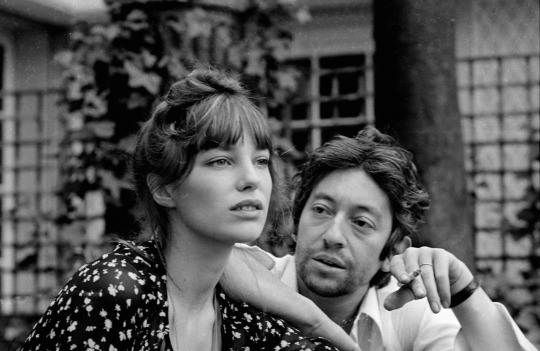
source: http://amadeusmag.com/blog/something-like-idols-serge-gainsbourg-jane-birkin/
Françoise Hardy was another popular icon in France at this time. She was a signer and actress. Her music was described as 50′s teen idol, and girl rock band, with some jazz. By 17 she was writing and performing her own songs in French clubs. She is still alive and still recently making music.
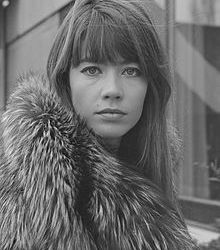
source:https://en.wikipedia.org/wiki/Fran%C3%A7oise_Hardy
YéYé Music
YéYé, as a term, comes from when artists add “ye! ye!” to theirs songs which is equivalent to American songs with the artists adding “yeah! yeah!” to them. YéYé music can be described as a young teenage girl singing sweet songs about lost love or other teenage drama, in a way that would make the listener blush. But the songs weren’t completely innocent,most had underlying inappropriate suggestions. At this time there were so many girls trying to become popular singers that there were mainly one-hit-wonders and most only gained popularity if they had something different about them. Some popular singers were, France Gall, Gillian Hills, Claude Françios, and Françoise Hardy.

source: http://feralhouse.com/ye-ye/
Written By: Stephanie Roach
Works Cited:
BFITrailers. "Last Year in Marienbad (1961) - Alain Resnais (Trailer) | BFI." YouTube. September 28, 2011. Accessed April 19, 2017. https://www.youtube.com/watch?v=yc6n2McMAnY&feature=youtu.be.
Claire, Marie. "A Brief History Of French Fashion." Marie Claire. December 10, 2015. Accessed April 19, 2017. http://www.marieclaire.co.uk/fashion/a-brief-history-of-french-fashion-34032.
Coloo. "Gillian Hills - Zou bisou bisou." YouTube. March 04, 2013. Accessed April 19, 2017. https://www.youtube.com/watch?v=n8jaAcD-yQU.
Davis, Mark. "How World War II shaped modern France." Euronews. May 06, 2015. Accessed April 19, 2017. http://www.euronews.com/2015/05/05/how-world-war-ii-shaped-modern-france.
Editors, Bonjour Paris, Margaret Kemp. "The Yé-yé Music Movement of the 60's." Bonjour Paris. May 21, 2015. Accessed April 19, 2017. https://bonjourparis.com/music-and-festivals/ye-ye-music-movement-60s/.
"Paris Refashioned, 1957-1968." Paris Refashioned, 1957-1968 | Fashion Institute of Technology. Accessed April 19, 2017. https://www.fitnyc.edu/museum/exhibitions/paris-refashioned.php.
Parnell, Lindsay. "The French New Wave: Revolutionising Cinema." Culture Trip. October 23, 2012. Accessed April 19, 2017. https://theculturetrip.com/europe/france/articles/the-french-new-wave-revolutionising-cinema/.
"Something Like Idols: Serge Gainsbourg & Jane Birkin." Amadeus. February 14, 2017. Accessed April 19, 2017. http://amadeusmag.com/blog/something-like-idols-serge-gainsbourg-jane-birkin/.
Unterberger, Richie. "Françoise Hardy | Biography & History." AllMusic. Accessed April 19, 2017. http://www.allmusic.com/artist/fran%C3%A7oise-hardy-mn0000186594/biography.
0 notes